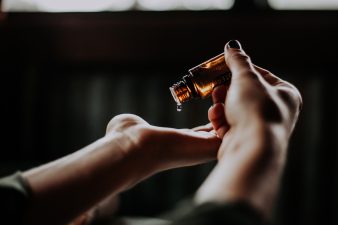
Barefoot shoes can help relieve pressure on toes squeezed into conventional shoes. They’ve helped me when I run. Like these ones from Vibram. Newer models look better.
Bunions are painful, unattractive, and make choosing shoes a nightmare. If you’ve been trying to ignore your bunions through the summer, the coming of winter and the need for closed shoes may be making you look for new solutions to the problem. Here are some tips for alleviating bunion discomfort and how to know when it’s time for surgery.
How to Reduce Bunion Pain Naturally
1.Throw out the Stilettos
Bunions have genetic as well as lifestyle causes. Still, it’s clear that wearing restrictive shoes or shoes that change the way you walk contributes to the problem. Pick shoes that move with your foot and don’t restrict your toes. Ideally, you can ask your podiatrist to prescribe the best shoes for you.
2. Take Joint Supplements
Arthritis may make your bunion symptoms worse. Take joint supplements to naturally reduce the symptoms of both arthritis and bunions. Do your research to choose supplements that are likely to have real effects based on clinical studies.
3. Maintain a Healthy Weight
More weight on your feet means more pain in your bunions. Even losing a few pounds may make a difference in how you move and the resulting pain in your bunions. If you find it difficult to exercise, a low-impact option like swimming or cycling may be less likely to cause pain than running.
4. Cushion the Bunion
Pressure on your bunions hurts. It also tends to change the shape of your foot or the way you walk, which will increase the bunion. Using a gel-filled or moleskin pad may be a good option to provide some cushioning, no matter what kind of shoes you’re wearing.
5. Shoe Inserts
Shoe inserts are supposed to position your foot correctly to prevent the bunion from getting worse. They may also alleviate some of the pain and pressure of the bunion.
They will not reverse the damage that’s been done or completely prevent the bunion from developing, but they may be able to reduce your symptoms.
6. Reduce Inflammation
The things that you do to reduce inflammation when you’ve had a muscle injury may also be effective for your bunions. Soak your bunion in warm water with Epsom salts, use ice packs and cooling products, or try ultrasound therapy and massage.
How do You Know When it is Time for Surgery?
The pain and frustration from bunions generally start out mild and progress relatively slowly. There are often spikes in the discomfort when you wear restrictive shoes or have flare-ups of arthritis.
These variations in your discomfort may cause you to think that it will get better and keep delaying surgery. However, the discomfort from bunions can be very significant. It may affect your life in ways you don’t entirely realize since the symptoms came on so slowly and have been going on for so long.
If you’ve tried some of these at-home remedies and you’re still experiencing discomfort, it is time for you to get a real bunion cure. Surgery will correct the ligaments, muscles, and tendons that are unbalanced and realign the big toe, eliminating the bunion for good.



